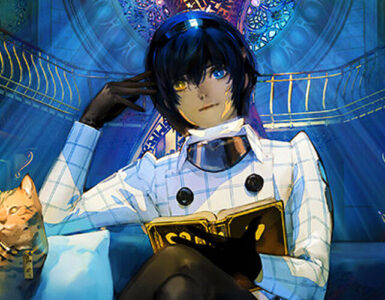Much like the previous Battle Royale craze, the Souls-like genre has gained immense popularity of late, with multiple action titles released in recent years incorporating gameplay elements inspired by From Software’s Souls franchise. But in an already over saturated market of Souls-like, what can developers do to make their game stand out? A44 Games, the creators of 2018’s Ashen, hopes they have an answer with their latest title, Flintlock: The Siege of Dawn.
Set in a world inspired by the Napoleonic era, players take on the role of Nor Vanek, a military combat engineer (or “sapper”) and member of the coalition. Nor and her comrades are tasked with retaking the titular city of Dawn, where hordes of the undead have poured out of a mysterious gateway to the Great Below known as The Door. When their attempt to seal The Door goes awry, she is separated from her comrades and teams up with Enki, a fox-like creature who possesses otherworldly powers, embarking on a journey to defeat the Gods who escaped the Great Below.

The story isn’t groundbreaking by any means, and serves largely as a vessel to propel the gameplay forward. Without an engaging story to keep players invested, it falls to gameplay and combat to carry the experience. Thankfully, what is on offer here is solid – but not without flaws of its own. Combat wise, the game employs standard souls-like systems such as parrying, perfect dodges and the emphasis on learning an opponent’s attack patterns for openings, but also mixes things up with several unique systems of its own.
Apart from standard melee combat, firearms and Enki’s magic play a significant part in the core gameplay loop. As the game’s title implies, Nor uses a pistol (as well as other guns obtained as the game progresses) in tandem with her blade to dispatch foes. These firearm attacks not only deal massive damage, but are also able to interrupt an enemy’s strong, unblockable attack, giving players an additional method of countering such attacks instead of simply dodging out of the way. The tradeoff here is that firearm attacks consume black powder charges, which is refilled by landing a certain number of melee hits on an enemy.

Alas, while the game tries its best to introduce unique gameplay systems to mix up the familiar souls-like experience, poor implementation of said systems and a cookie-cutter premise results in a title that ultimately fails to stand out from the crowd.
As Nor’s constant companion, Enki has the ability to curse an enemy with a button press, priming them and allowing Nor’s attacks to fill up a curse bar. Once filled, Nor can perform a flashy critical blow, which can destroy an enemy’s armor or take out a huge chunk of an unarmored enemy’s health. With these gameplay systems combined, combat becomes a dance of cursing an enemy while reacting to attacks and countering with either blade or gun.
Wrapping combat up in a neat bow is a rather unique experience point system, which the game dubs as “reputation points”. Behaving in a similar way to a combo system of other games, Nor steadily earns a reputation point multiplier for performing combat actions without getting hit and can bank said points with a button press. This ends up becoming a risk and reward gameplay system, where one small mistake can cause players to lose their multiplier completely if they are not careful. Players can spend accumulated reputation points on a number of unlockable skills, as well as upgrades for gear.

Despite bringing a number of new ideas to the table, combat does falter a little due to poor implementation. Combat in Flintlock: The Siege of Dawn is animation-locked, which coupled with a relatively slow attack animation speed leads to combat feeling sluggish and unintuitive. Parrying with both melee and ranged weapons feels especially unreliable due to a brief wind-up animation, before entering the actual parry “stance”. In a game where timing is critical for deflecting attacks, this slight delay leads to many instances where taking damage feels unfair. The game also periodically throws hordes of enemies at the player at once, which feels out of place in a genre such as this. Since crowd control moves are limited, and a single hit removes the multiplier, moments like these can lead to frustration when the player is hit by an attack from off-screen.
Unlike most games of the genre, Flintlock: The Siege of Dawn is a much more streamlined experience, evidenced by the games’ take on exploration and traversal. The game is split into various open zones that consist of an obvious “main” path and side paths to find various collectables that can increase health and magic prowess, side quests or resources. The world has a heavy emphasis on verticality, requiring the use of Nor’s double jump and air dash moves to reach new areas.

In addition, various skull pedestals litter the world, which when activated allows Nor to fly though the air to reach new locations or open up shortcuts to previous ones. In typical souls-like fashion, checkpoints can be found that allow players to rest and refill their consumables while respawning defeated enemies. But while the game does feature a handful of side missions, these fail to add to the games overarching plot in any meaningful way, instead relying on a repetitive formula of fetch quests. In the end, these missions end up as inconsequential to the game’s story, and only exist as a way for players to earn extra bits of loot and experience.
This lack of attention to detail is also apparent by an absence of in-engine cutscenes, instead relying on hand-drawn, slideshow-esque bits of lore told from the perspective of an NPC, detailing Nor’s journey from location to location. Much of the game’s storytelling is doled out through the use of static conversations between Nor and the characters she meets along her journey, but uninspired vocal performances make these moments feel as though they were simply shoehorned in, rather than be the result of earnest attempts at proper world-building.

Performance-wise, the game includes both a 30fps quality mode and a 60fps performance mode on the PS5. With a game like this where timing and precision is necessary, a smooth framerate greatly enhances the experience. Thankfully, the game holds a steady 60fps in its performance mode most of the time, with drops to the mid 50’s occurring only during busy scenes, and certain areas of the world such as those with thick vegetation.
Visually, the game also lacks any depth beyond the obvious fantastical world setting where gods and demons exist. Instead of filling the landscapes with otherworldly flora, fauna and architecture, the game’s aesthetics feel uninspired and drab. Apart from the opening area which sees Nor fighting in the trenches outside a medieval castle, other areas of the game lack any real identity and while this is not to say that the game looks ugly, the issue here is a lack of environmental diversity, with the game largely consisting of mountainous regions which offer little variety apart from different shades of brown. Enemy controlled forts spread across the map do offer a much-needed change of scenery, but reused textures and environmental props within these locations prevent them from feeling truly unique.

Enemy design is also severely lacking, consisting of mostly humanoid archetypes that differ only in the type of weapon used. Boss encounters are definitely the highlight, with each sporting a unique look and attack mechanic, but these are too few and far between to leave much of an impact. Ultimately, it feels like there was a missed opportunity here to fill the world with more interesting sights to explore and unique characters to encounter.
Fundamentally, the game’s biggest flaw is not that it fails in any particular aspect, but that it doesn’t excel in any. In a sea of similar titles, nothing is really done here to set it apart from its peers, and the result is an uninspired title that feels largely forgettable once the credits roll.
GEEK REVIEW SCORE
Summary
Despite introducing some new ideas when it comes to combat, Flintlock: The Siege of Dawn ultimately fails to leave an impression, merely offering a perfectly serviceable Souls-like experience for those with that particular itch.
Overall
6.3/10-
Gameplay - 7/10
7/10
-
Story - 6/10
6/10
-
Presentation - 6.5/10
6.5/10
-
Value - 6/10
6/10
-
Geek Satisfaction - 6/10
6/10













